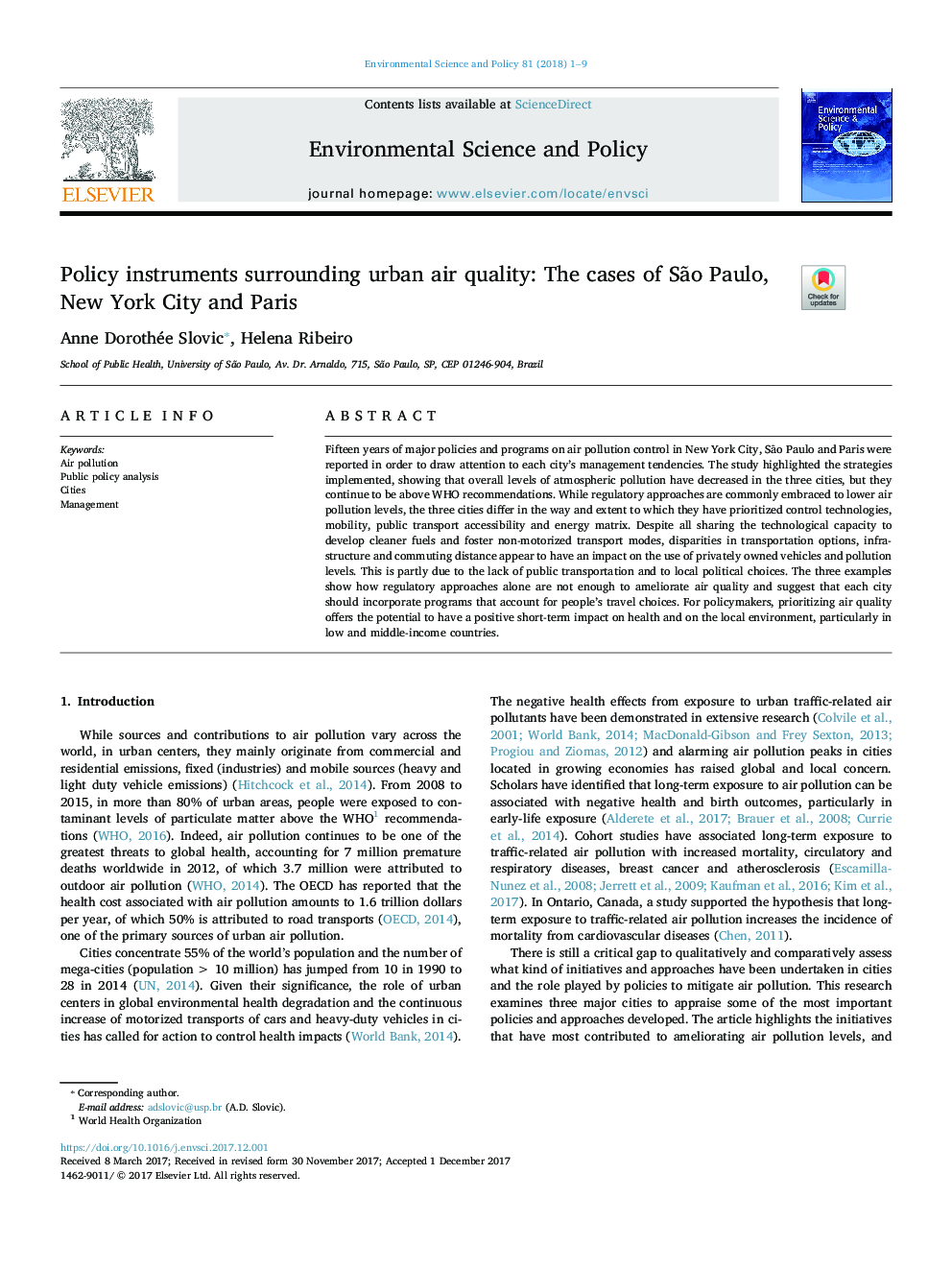| Article ID | Journal | Published Year | Pages | File Type |
|---|---|---|---|---|
| 7466209 | Environmental Science & Policy | 2018 | 9 Pages |
Abstract
Fifteen years of major policies and programs on air pollution control in New York City, São Paulo and Paris were reported in order to draw attention to each city's management tendencies. The study highlighted the strategies implemented, showing that overall levels of atmospheric pollution have decreased in the three cities, but they continue to be above WHO recommendations. While regulatory approaches are commonly embraced to lower air pollution levels, the three cities differ in the way and extent to which they have prioritized control technologies, mobility, public transport accessibility and energy matrix. Despite all sharing the technological capacity to develop cleaner fuels and foster non-motorized transport modes, disparities in transportation options, infrastructure and commuting distance appear to have an impact on the use of privately owned vehicles and pollution levels. This is partly due to the lack of public transportation and to local political choices. The three examples show how regulatory approaches alone are not enough to ameliorate air quality and suggest that each city should incorporate programs that account for people's travel choices. For policymakers, prioritizing air quality offers the potential to have a positive short-term impact on health and on the local environment, particularly in low and middle-income countries.
Related Topics
Physical Sciences and Engineering
Energy
Renewable Energy, Sustainability and the Environment
Authors
Anne Dorothée Slovic, Helena Ribeiro,
